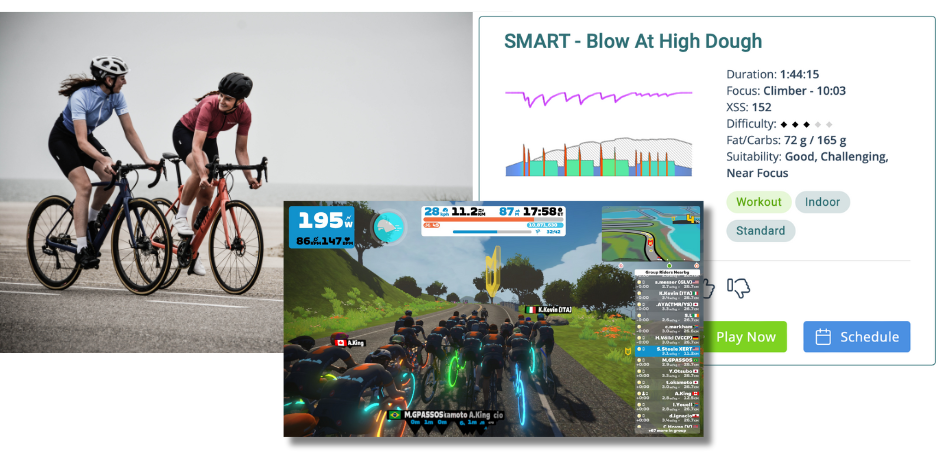As part of your training program with Xert, the Adaptive Training Adviser calculates your XSS surplus/deficit each day. This surplus/deficit is based on your current Training Load, your selected Improvement Rate, and the training you’ve done over the last week. From there, Xert will then recommend training for you based on their XSS, Focus, Difficulty, etc.
> Why do I see multiple recommended XSS values from the Adaptive Training Adviser?
In addition to recommending workouts, Xert’s Adaptive Training Adviser (XATA) also recommends virtual rides & outdoor rides as part of your training program!
We understand that the type of ride an athlete is doing might impact the amount of training they do. For example, some athletes might not consider doing a 3 hour virtual endurance ride on the turbo, but might consider a 3 hour outdoor ride. As another example, some athletes might not want to bother with getting dressed up in the rain & cold for a 45 min interval ride outdoors, but would happily jump on the turbo for 45 min of intervals.
For this reason, you will find that the recommended XSS will vary for each activity type. In the example below, XATA shows a 159 XSS deficit for this athlete. From here, XATA splits the recommendations into Indoor Workout (95 XSS), Virtual Ride (117 XSS), or Outdoor Ride (204 XSS):

> How does Xert calculate the Recommended XSS for each activity type?
Xert looks back at your activities over the past 6 weeks to understand what you typically do. It then calculates the average XSS for your activities on each day of the week. An activity needs a minimum of 20 XSS to be counted. If no activities exist on a given weekday, Xert will use the average for all weekdays. Similarly, if no activities exist on a weekend day, it uses the average for your weekend rides.
Once Xert has calculated the average XSS for each activity type, it adds on some additional XSS based on your selected Improvement Rate (IR). The higher your selected IR, the greater the recommended XSS will be above the 6-week average. You can test this yourself by changing your Improvement Rate up or down. You will see the recommended XSS for each activity type will also adjust up or down.
If no activities of a particular type exist, then that activity type won’t be recommended. For example, if there are no Virtual Rides recorded on weekends, Xert will not provide a Recommended XSS value for Virtual Rides. In the example below, the athlete has not performed any Workouts over the past 6 weeks, so Xert only displays XSS recommendations for Virtual Rides & Outdoor Rides:
 > Why does it work this way?
> Why does it work this way?
The answer comes down to the idea of Progressive Overload. In other words, if you wish to improve, you need to train more than what your body is used to. Therefore, the Xert Adaptive Training Adviser expects that you will train as you normally would, while tacking on additional XSS for you to meet your selected Improvement Rate.
As mentioned above, Xert tracks your usually activity and recommends training similar to what you typically do. If you never do indoor workouts, then XATA won’t recommend them. If you normally do 3 hour rides outside and 1 hour virtual rides, XATA will recommend training accordingly, where ~3 hr outdoor rides are recommended and ~1 hr virtual rides will be recommended. Ultimately, you will have the option to train indoors or outdoors.
> How can I filter my training recommendations by a specific activity type?
By default, Xert will show all activities types in the activity recommendation panel. If you wish to display only a particular activity type, you can click on its associated bubble to narrow the recommendations. As always, you can also use the duration filter or the full filter for even greater control over the recommended activities. In the image below, the user has filtered their recommended training by selecting the ‘Virtual’ button to only display recommended Virtual Rides:

